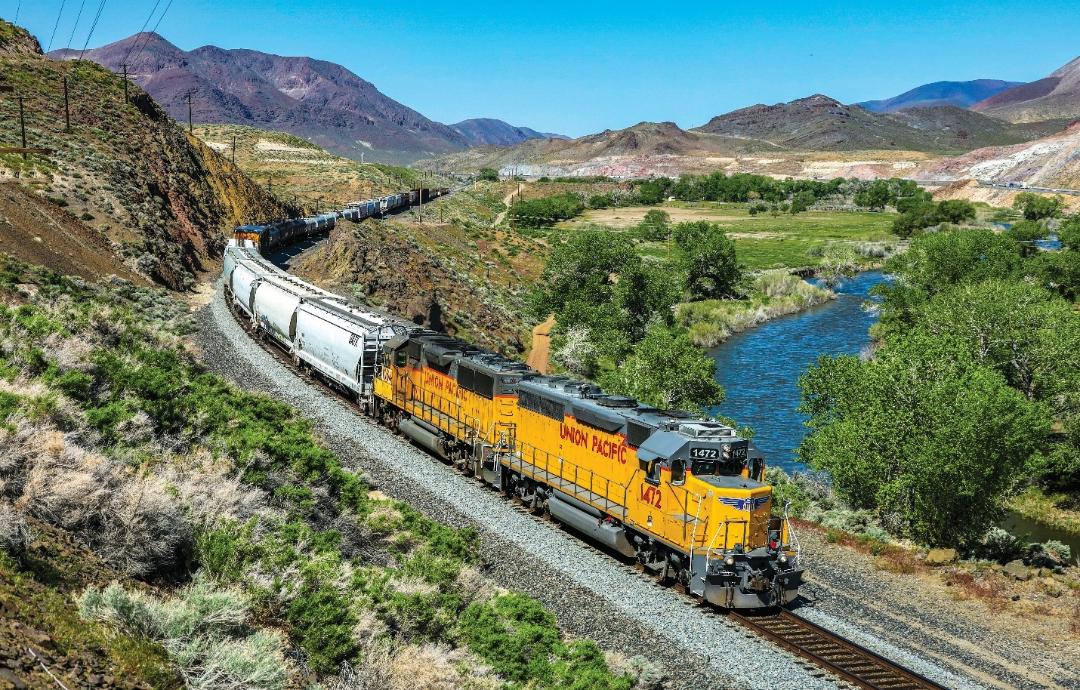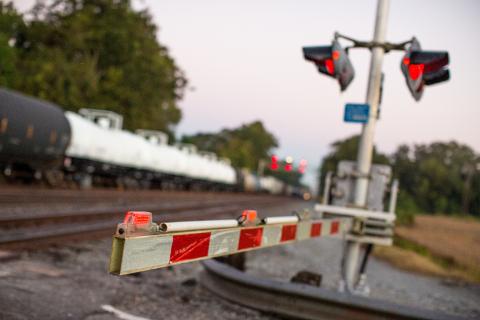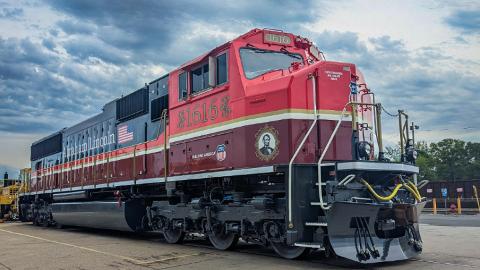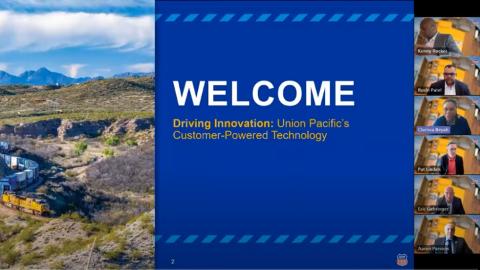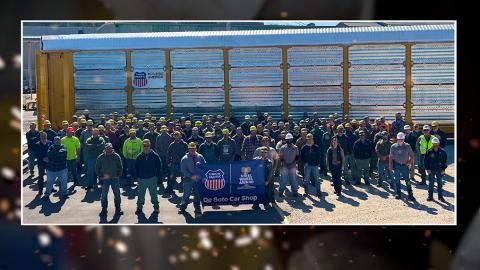When Union Pacific Railroad opened an intermodal terminal in Phoenix last year, thousands of trucks that once traveled between ocean ports in Southern California and key markets in Arizona were replaced by trains.
The shift reduced highway traffic but, perhaps more important, it also helped shippers and businesses who switched to rail reduce their collective carbon footprint.
Railroads and their rolling, low-friction steel-on-steel operations are simply the most fuel-efficient way to transport goods and material over land, with one train able to move one ton of freight nearly 500 miles on a single gallon of gas.
However, Union Pacific isn’t sitting on its laurels.
The railroad is continuously exploring new technologies and new ways of doing business to reduce fuel consumption and GHG emissions.
“When businesses choose Union Pacific Railroad for their shipping needs, they’re not only tapping into a premier rail network with connections to some of the fastest-growing markets in North America, they are also helping build a more sustainable future and healthier environment for generations to come,” said Kenny Rocker, executive vice president – Marketing & Sales.
For example, Union Pacific estimates that last year its customers avoided 22.2 million metric tons of GHG emissions by using rail, which is the equivalent of approximately 200,000 trucks operating for one year.
Here are a few initiatives and projects that Union Pacific has undertaken over the past few years – both big and small – that have made for a more efficient and sustainable shipper experience:
Automatic Locomotive Shutdowns: Union Pacific installed new technology on our locomotives to prevent unnecessary engine idling, and we are actively tracking and enforcing locomotive idling shutdown protocols to keep idling at a minimum.
Regional Intermodal Terminals: Union Pacific is planning and exploring new regional intermodal terminals, such as the one that opened in Phoenix in 2024. These terminals are pivotal in meeting our customers’ demands and converting truck traffic to rail transportation.
Union Pacific has increased its intermodal ramp capacity in Chicago, Southern California and the Twin Cities, and is currently building a new terminal in Kansas City.
Hybrid Locomotive: Union Pacific is testing a first-of-its kind hybrid battery-electric switch locomotive in its North Little Rock, Arkansas, yard. The locomotive is expected to consume up to 80% less fuel than a conventional locomotive because the hybrid operates on both battery and diesel.
Hybrid Cranes: Union Pacific is testing hybrid cranes that run on batteries and diesel at its intermodal terminals in Chicago and Los Angeles. These cranes, which are used to load and unload containers onto trucks, are expected to consume at least 65% less diesel than standard cranes.
Hydrogen Signal Generators: In 2023, Union Pacific installed hydrogen fuel cell-powered backup generators at more than 65 crossing signals in the Gulf Coast region. The fuel cells not only reduce GHG emissions, but they have a much longer run time between fueling events, which increases reliability during a hurricane.
Trucker Experience: Thousands of truck drivers come in and out of our intermodal terminals every day, dropping off and picking up containers that carry consumer goods. A new mobile app developed by Union Pacific and enhanced gate technology allows them to check in ahead of time and directly navigate to their container – significantly reducing truck wait times and emissions at the terminal gate.
Biofuels: The railroad has been a leader in exploring and utilizing biofuels within its locomotive fleet. In 2023, our consumption of low-carbon fuels reached 6.1% of total diesel used, up from 4.5% in 2022.
Union Pacific is also working with other Class I railroads and domestic locomotive manufacturers to test and approve even higher blends of biofuel and renewable diesel.
In 2023, these and other testing collaborations led to both major locomotive manufacturers certifying the utilization of blends of up to 50% renewable diesel and 11% biofuel in locomotives. The work continues.

